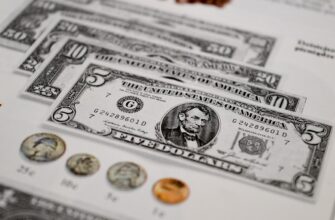What is a Bitcoin Debit Card?
A Bitcoin debit card bridges the gap between cryptocurrency and everyday spending. Unlike traditional cards tied to bank accounts, it connects to your crypto wallet, instantly converting Bitcoin to fiat currency (like USD or EUR) when you make purchases. This means you can spend your digital assets at millions of merchants worldwide – from grocery stores to online retailers – just like a regular debit card.
Step-by-Step: How to Buy a Bitcoin Debit Card
Follow these steps to get your own crypto-powered spending tool:
- Choose a Reputable Provider: Research companies like Crypto.com, BitPay, Coinbase Card, or Binance Card. Compare fees, supported cryptocurrencies, and regional availability.
- Sign Up & Complete Verification: Create an account and undergo KYC (Know Your Customer) checks. This typically requires submitting ID documents and proof of address for security compliance.
- Order Your Physical/Virtual Card: Select card type (physical for ATM/retail, virtual for online). Physical cards may incur a small issuance fee ($5-$50) and take 7-14 days for delivery.
- Load Bitcoin Onto Your Card: Transfer BTC from your personal wallet or exchange account to the card’s dedicated crypto wallet address. Some providers auto-convert crypto upon spending; others require manual conversion.
- Activate & Start Spending: For physical cards, activate via the provider’s app. Use your PIN at terminals or shop online using virtual card details. Track transactions in real-time through the app.
Top Benefits of Using a Bitcoin Debit Card
- Spend Crypto Anywhere: Accepted wherever Visa/Mastercard is – no need to find crypto-friendly merchants.
- Instant Fiat Conversion: Seamless BTC-to-cash conversion at point-of-sale with competitive exchange rates.
- Crypto Rewards: Earn up to 8% cashback in Bitcoin or native tokens on purchases (varies by provider/tier).
- No Bank Account Needed: Ideal for the unbanked or those avoiding traditional finance systems.
- Enhanced Security: Features like transaction alerts, card freezing, and biometric app locks protect your funds.
Key Considerations Before Buying
- Fees: Watch for issuance fees, ATM withdrawal fees (2-3%), foreign transaction fees (up to 3%), and inactivity fees.
- Volatility Risk: Bitcoin’s price fluctuations mean your spending power can change between loading and using the card.
- Geographic Limits: Some cards aren’t available in certain countries (e.g., U.S. restrictions on Binance Card).
- Tax Implications: Spending crypto may trigger capital gains taxes in your jurisdiction – consult a tax professional.
Frequently Asked Questions (FAQ)
Q: Can I use a Bitcoin debit card without verification?
A: No. Regulatory compliance requires KYC verification for all major providers to prevent fraud and money laundering.
Q: How long does it take to get a Bitcoin debit card?
A: Virtual cards activate instantly after approval. Physical cards ship within 7-14 business days, depending on location.
Q: Are Bitcoin debit cards anonymous?
A: No. Transactions are linked to your verified identity, though they offer more privacy than traditional banks regarding spending habits.
Q: What happens if Bitcoin’s price crashes after I load my card?
A: Your card balance reflects fiat value, not BTC amount. If you load $100 worth of BTC and the price drops, you still have $100 to spend.
Q: Can I reload the card with other cryptocurrencies?
A: Most cards support multiple cryptos like Ethereum, Litecoin, or stablecoins alongside Bitcoin. Check provider specifics.
Conclusion
Buying a Bitcoin debit card simplifies spending your cryptocurrency in the real world. By selecting a trusted provider, completing verification, and loading your BTC, you unlock global purchasing power with crypto rewards. While fees and volatility require attention, the convenience makes it a game-changer for crypto enthusiasts. Start small, compare options, and transform your digital assets into everyday spending power.








